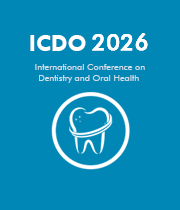3D Printing in Dentistry
3D printing, also known as additive manufacturing, has emerged as a revolutionary technology in the field of dentistry, transforming the way dental professionals approach treatment and fabrication processes. This cutting-edge technology allows for the creation of three-dimensional objects layer by layer, offering unprecedented precision and customization. In dentistry, 3D printing finds widespread application in various aspects, from producing highly accurate dental models and crowns to crafting intricate surgical guides. One significant advantage lies in its ability to create patient-specific implants, aligners, and prosthetics, ensuring a tailored and precise fit. The speed and efficiency of 3D printing contribute to streamlined workflows, enabling quicker turnaround times for dental laboratories and practitioners.
Moreover, 3D printing facilitates the production of complex dental structures that may be challenging to achieve through traditional methods. The versatility of materials used in 3D printing allows for the creation of temporary and permanent restorations, enhancing the overall treatment experience for patients.Dental professionals leverage 3D printing technology to visualize treatment plans through detailed anatomical models, improving communication with patients and fostering a better understanding of proposed procedures. The integration of digital scans and CAD/CAM technology further enhances the accuracy and predictability of 3D-printed dental solutions.

David Geoffrey Gillam
Queen Mary University of London, United Kingdom
Christopher Turner
Spacemark Dental, United Kingdom




Title : Evaluating hygienist follow up for head and neck oncology patients in secondary care: Results from a two cycle audit
Peter Basta, Newcastle Dental Hospital, United Kingdom
Title : Atypical facial pain unravelled
Christopher Turner, Spacemark Dental, United Kingdom
Title : New treatment of temporomandibular disorder through muscle balance and muscle regeneration by activation of quiescent muscle stem cells( satellite cells) with mitochondrial dynamics
Ki Ji Lee, National Reserach Foundation & Busan Medical University, Korea, Republic of
Title : MRONJ and ORN: Referral or management in primary care? Navigating guidelines in the context of long waiting lists
Alisha Sagar, NHS England, United Kingdom
Title : Managing the unexpected: An Insight into supernumerary teeth
Bahar Gharooni Dowrani, Guy's and St Thomas' NHS Foundation Trust, United Kingdom
Title : Laxative prescribing for post operative head and neck cancer patients at Derriford Hospital
Pui Sze Kylie Li, Cardiff and Vale University Health Board, United Kingdom